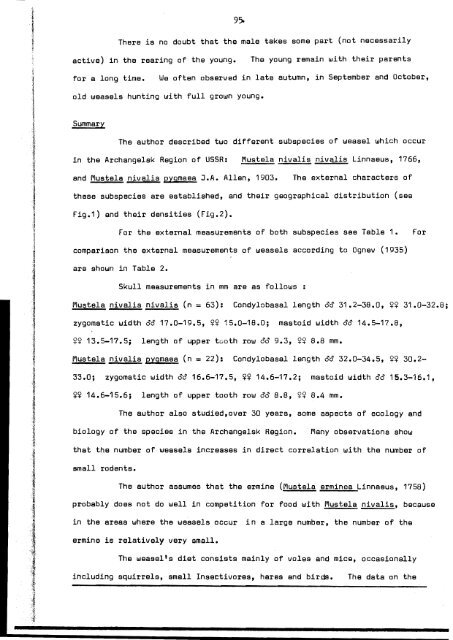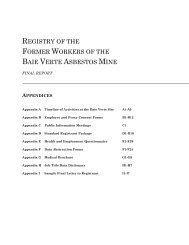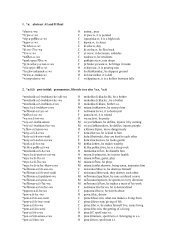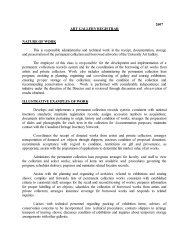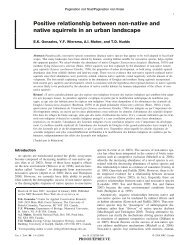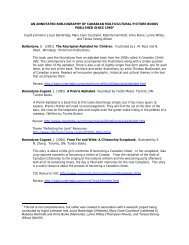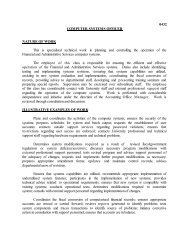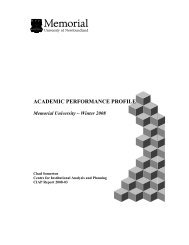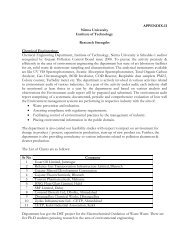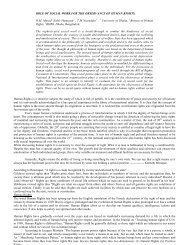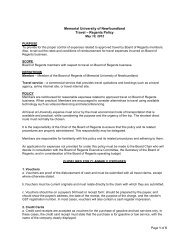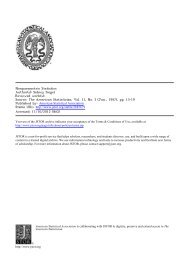Create successful ePaper yourself
Turn your PDF publications into a flip-book with our unique Google optimized e-Paper software.
There is no doubt that the male takes some part (not necessarily<br />
active) in the rearing <strong>of</strong> the young.<br />
The young remain with their parents<br />
for a long time. We <strong>of</strong>ten observed in late autumn, in September and October,<br />
old weasels hunting with full grown young.<br />
Summary<br />
The author described two different subspecies <strong>of</strong> weasel which occur<br />
in the Archangelsk Region <strong>of</strong> USSR: Mustela nivalis nivalis Linnaeus, 1766,<br />
and Mustela nivalis pygmaea J.A. Allen, 1903.<br />
The external characters <strong>of</strong><br />
these SUbspecies are established, and their geographical distribution (see<br />
Fig.1) and their densities (Fig.2).<br />
For the external measurements <strong>of</strong> both SUbspecies see Table 1.<br />
For<br />
comparison the external measurements <strong>of</strong> weasels according to Ognev (1935)<br />
are shown in Table 2.<br />
Skull measurements in mm are as follows :<br />
Mustela nivalis nivalis (n = 63): Condylobasal length aa 31.2-38.0, ~~ 31.0-32.8;<br />
zygomatic width aa 17.0-19.5, ~~ 15.0-18.0; mastoid width aa 14.5-17.8,<br />
~~ 13.5-17.5; length <strong>of</strong> upper tooth row aa 9.3, ~~ 8.8 mm.<br />
Mustela nivalis pygmaea (n = 22): Condylobasal length aa 32.0-34.5, ~~ 30.2<br />
33.0; zygomatic width aa 16.6-17.5, ~~ 14.6-17.2; mastoid width aa 15.3-16.1,<br />
~~ 14.6-15.6; length <strong>of</strong> upper tooth row aa 8.8, ~~ 8.4 mm.<br />
The author also studied,over 30 years, some aspects <strong>of</strong> ecology and<br />
biology <strong>of</strong> the species in the Archangelsk Region.<br />
Many observations show<br />
that the number <strong>of</strong> weasels increases in direct correlation with the number <strong>of</strong><br />
small rodents.<br />
The author assumes that the ermine (Mustela erminea Linnaeus, 1758)<br />
probably does not do well in competition for food with Mustela nivalis, because<br />
in the areas where the weasels occur<br />
in a large number, the number <strong>of</strong> the<br />
ermine is relatively very small.<br />
The weasel's diet consists mainly <strong>of</strong> voles and mice, occasionally<br />
including squirrels, small Insectivores, hares and birds.<br />
The data on the


